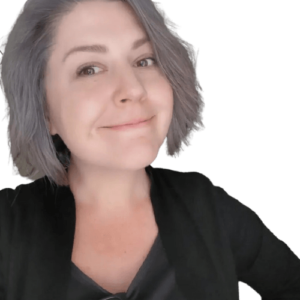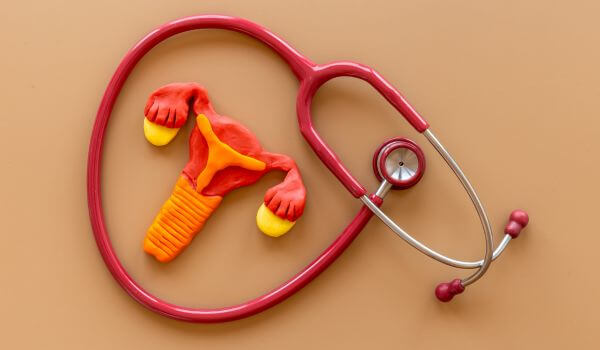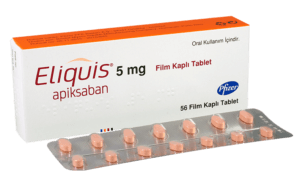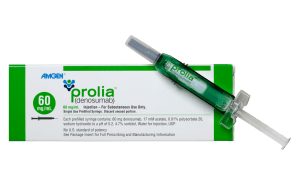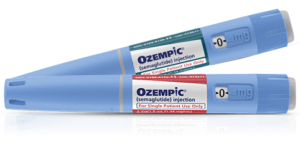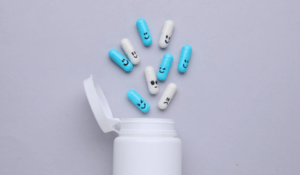 A friend of mine has recently been diagnosed with depression. His doctor has suggested that alongside therapy sessions, he consider medication as well. Unfortunately, the stigma around taking prescribed antidepressants has caused him to resist this course of treatment out of fear of some of the common side effects of antidepressants. He thinks that feeling better in one way may make him feel worse in others.
A friend of mine has recently been diagnosed with depression. His doctor has suggested that alongside therapy sessions, he consider medication as well. Unfortunately, the stigma around taking prescribed antidepressants has caused him to resist this course of treatment out of fear of some of the common side effects of antidepressants. He thinks that feeling better in one way may make him feel worse in others.
However, these days, there are multiple treatment options available for depression, and newer medications that may not come with the side effects experienced with some of the older generation meds. Let’s take a look at what antidepressant medications are available and how they work.
How do antidepressants work?
Prescribed antidepressants are medications prescribed to help manage mental health conditions such as depression, anxiety, eating disorders, obsessive-compulsive disorder (OCD), and post-traumatic stress disorder (PTSD). They are often used alongside other approaches, such as therapy and lifestyle changes. Antidepressants work by changing the levels of certain brain chemicals, called neurotransmitters, that play a role in mood and anxiety. These include serotonin, noradrenaline, dopamine, and melatonin.
How long do antidepressants take to start working?
Antidepressants often take time to start working, so patients might need to wait before noticing improvements in their symptoms. For individuals with depression, a general waiting time of two to four weeks is expected to begin feeling better, though the full effects may take six to eight weeks. Those with anxiety disorders may need four to six weeks to notice initial improvements, with the full benefits potentially taking up to 12 weeks. However, prescribed antidepressants do not work for everyone, even after extended use.
What are the different kinds of antidepressants?
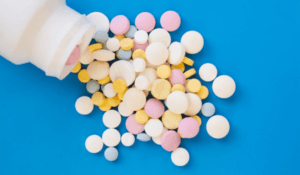
Selective serotonin reuptake inhibitors (SSRIs)
SSRIs are one of the most commonly prescribed antidepressants. Although they aren’t necessarily more effective than other types, they are generally tolerated well by most patients, meaning the side effects are usually mild. Some examples of SSRIs include Citalopram, Escitalopram, Prozac (fluoxetine), Luvox (fluvoxamine), Paxil (paroxetine), and Lustral/Zoloft (sertraline).
SSRIs increase serotonin levels in the brain by preventing its reabsorption. Serotonin, a chemical messenger, plays a key role in managing mood, sleep, and emotions. By boosting serotonin activity, SSRIs help improve mood.
SSRIs may cause side effects such as nausea, vomiting, dizziness, blurred vision, changes in weight, decreased libido, erectile dysfunction, and difficulty reaching orgasm. These side effects are often more noticeable at the beginning of treatment but usually lessen as the body adjusts over time.
Serotonin and noradrenaline reuptake inhibitors (SNRIs)
SNRIs are often used to treat more severe cases of depression and tend to cause fewer side effects compared to SSRIs. Some common examples of SNRIs include Cymbalta (duloxetine), Effexor (venlafaxine), and Pristiq (desvenlafaxine).
SNRIs work by blocking the reabsorption of two key neurotransmitters, allowing them to address a broader range of symptoms. However, they may cause side effects such as nausea, dry mouth, dizziness, fatigue, decreased appetite, and lower libido.
Noradrenaline reuptake inhibitors (NARIs)/Norepinephrine reuptake inhibitors (NRIs) 
Prescribed antidepressants called norepinephrine reuptake inhibitors (NRIs), also called noradrenaline reuptake inhibitors (NARIs), are medications that raise norepinephrine levels in the brain. They stop the brain from reabsorbing norepinephrine in the spaces between nerve cells. NARIs affect the brain’s chemical noradrenaline and are less likely to cause drowsiness compared to other types of medications. Edronax (reboxetine) is one example of a NARI.
NRIs stop brain cells from reabsorbing norepinephrine, a chemical that affects mood and focus. They don’t affect other brain chemicals. These medications are used to treat conditions like major depression, seasonal depression, and ADHD and even help with pain management. NRIs are sometimes used to treat panic and anxiety disorders, even though they aren’t officially approved for those conditions.
Tricyclic antidepressants (TCAs)
TCAs are not prescribed as often nowadays because they tend to cause more serious side effects compared to newer medications. Some examples of TCAs include Elavil (amitriptyline), Aventyl (nortriptyline), Anafranil (clomipramine), dothiepin, and Sinequan (doxepin).
Tricyclic antidepressants boost levels of norepinephrine and serotonin in the brain while inhibiting the effects of acetylcholine, a different neurotransmitter. They are commonly prescribed for conditions such as depression, generalized anxiety disorder (GAD), panic attacks, OCD, PTSD, and persistent nerve pain.
Monoamine oxidase inhibitors (MAOIs)
MAOIs, such as phenelzine and tranylcypromine, are not commonly prescribed today because they can cause significant side effects. Monoamine oxidase inhibitors (MAOIs) are a type of antidepressant that function by inhibiting the enzyme monoamine oxidase. This enzyme breaks down neurotransmitters like serotonin, dopamine, and norepinephrine in the brain. By preventing this breakdown, MAOIs increase the availability of these neurotransmitters, helping to alleviate depression and improve mood.
Reversible inhibitors of monoamine oxidase A (RIMAs)
RIMAs, like Manerix (moclobemide), are more often prescribed for treating anxiety and social phobias as well as depression. Reversible inhibitors of monoamine oxidase A are a type of drug that blocks the MAO-A enzyme in a selective and temporary way. These drugs are used to treat conditions like depression and dysthymia. Because they work temporarily, RIMAs are considered safer than older MAOIs, especially in cases of overdose, but they are less effective at increasing the brain chemicals linked to depression.
Noradrenaline-serotonin-specific antidepressants (NaSSAs)
NaSSAs are a newer type of medication that tends to cause fewer sexual side effects compared to others. However, they may lead to weight gain. NaSSAs function similarly to SSRIs by enhancing the levels of noradrenaline and serotonin. They achieve this by blocking specific serotonin receptors. Potential side effects of NaSSAs include drowsiness, dizziness, dry mouth, increased appetite, weight gain, and constipation.
Atypical antidepressants
Atypical antidepressants, such as agomelatine and Vortioxetine, function differently from other common antidepressant classes. Agomelatine targets melatonin receptors to help regulate mood, while vortioxetine influences serotonin receptors but works uniquely compared to SSRIs and SNRIs.
Which is the best medicine for treating depression?
There are many types of antidepressants, and each works in slightly different ways. No single type is proven to be better than the rest because people react differently to each one. Some individuals might find a certain antidepressant helpful, while it may not work for someone else. Similarly, one person might have side effects from a medication, but another person might not have any issues with it. Patients should talk to a mental health professional about different ways to treat depression. It might take some time to find the right antidepressant that works well and has the fewest side effects.
What are the common side effects of antidepressants? 
Antidepressants, like any medication, can cause side effects, but most find them manageable and don’t need to stop taking the medication. Common side effects may include headaches, dizziness, nausea, weight gain, feelings of anxiety or restlessness, trouble sleeping or feeling overly tired, and sexual issues like reduced interest in sex. Many of these side effects tend to improve over time as the body adjusts to the medication. Patients should consult their doctor or pharmacist to learn about potential side effects linked to the specific antidepressant they have been prescribed.
Serotonin syndrome, or serotonin toxicity, is a rare but serious side effect of some antidepressants. It can cause symptoms like shaking, trouble walking, confusion, feeling restless, sweating, fever, chills, or diarrhea. If someone shows signs of serotonin toxicity, go to the emergency room or call a doctor right away. This condition is more common when someone is taking more than one antidepressant or mixing it with other medications, like opioids or recreational drugs.
Is there an increased risk of suicide with antidepressant treatment?
When starting antidepressants, some individuals, particularly children and teens, may have more frequent suicidal thoughts. However, this usually decreases as the medication begins to take effect over time. When someone begins taking antidepressants, it’s important to watch for any signs of suicidal thoughts or behaviors. For those starting antidepressants themselves, it’s helpful to plan ways to stay safe in case thoughts of suicide arise.
Other treatments for depression and anxiety
Various approaches can help manage symptoms of depression and anxiety. These include talking therapy sessions, adopting healthier lifestyle habits, and using herbal remedies. For some individuals, psychological therapy on its own is enough to improve their well-being. Others benefit more from combining therapy with antidepressant medication.
There are several types of psychological therapies available. One of the most widely used is cognitive behavioral therapy (CBT), which focuses on recognizing negative thoughts and changing the way people respond to them. Other therapies take a different approach, encouraging individuals to accept their thoughts and surroundings without judgment.
Making lifestyle changes can also be beneficial:
- Regular exercise can boost mood, enhance self-esteem, and lower the chances of weight gain, which is a common side effect of antidepressant medications.
- Limiting or avoiding alcohol is recommended, as alcohol can worsen symptoms of depression.
- Getting enough sleep is crucial since a lack of sleep can intensify mood-related issues.
- Maintaining a healthy, balanced diet supports both physical and mental well-being.
- Practices like relaxation techniques and meditation may also help manage and improve depression symptoms.
- Certain herbal medicines, like St. John’s wort, may help reduce mild symptoms of depression and anxiety for some individuals. Others might use herbal remedies to improve sleep, such as the Sleep Pack. It’s important for anyone taking herbal medicines to inform their doctor, as these remedies can interact with prescription medications.
FAQs
How do I know which antidepressant is right for me?
When choosing between the wide available range of prescribed antidepressants, the doctor considers several factors, such as the patient’s age, gender, primary symptoms, and any possible side effects. They also look at how the medication might interact with other drugs the patient is taking, as well as whether the patient is pregnant or breastfeeding. Personal preferences are also taken into account to find the most suitable option. Different antidepressants can work better for some people than others. It may take time to figure out which one is most effective for an individual.
How do I take antidepressants?
Antidepressants are usually taken once a day. Doctors or pharmacists might suggest taking them at a specific time to reduce the risk of side effects. For instance, if a medication causes drowsiness, it may be better to take it at night before going to sleep.
How long do I need to take antidepressants?
The length of time someone needs to take antidepressants varies based on their situation and how well they respond to treatment. For example, for some, a course of twelve months may be enough, allowing them to stop without their symptoms returning. Others may require long-term use, sometimes even for the rest of their lives. Stopping antidepressant medication should be done carefully and under the guidance of a doctor. To prevent withdrawal symptoms, it’s important to slowly decrease the dosage rather than stopping suddenly. A doctor can provide a safe plan for gradually reducing the medication.



